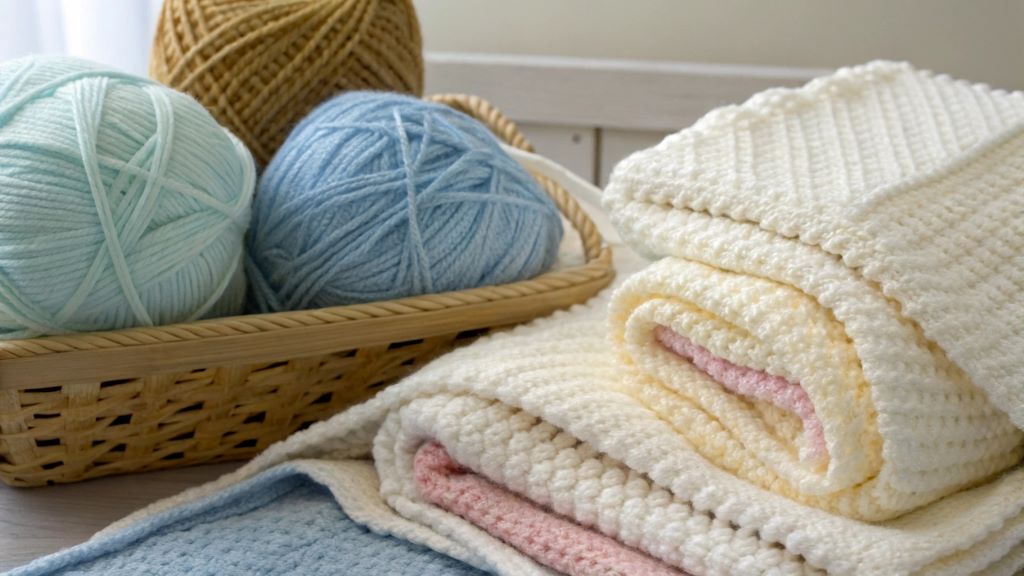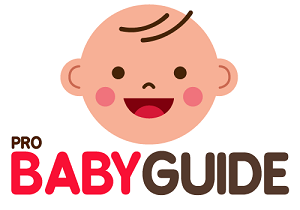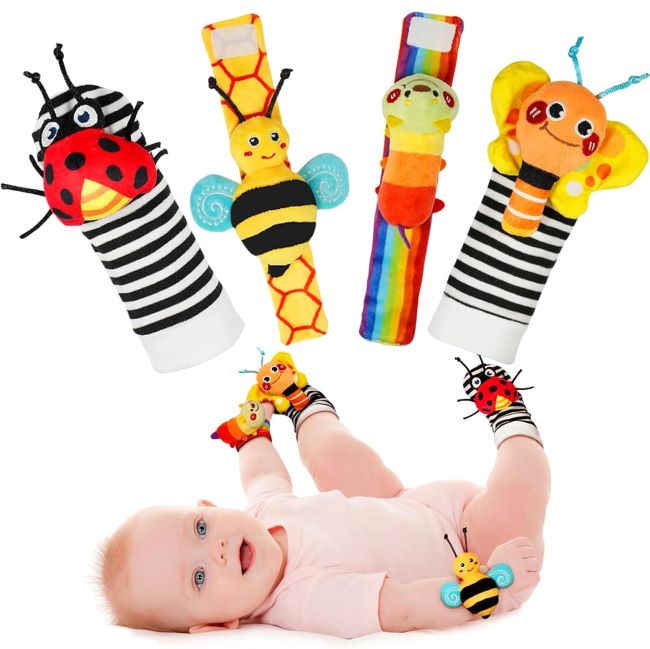Creating a baby blanket is a labor of love. It’s a project that combines creativity with care, especially when selecting the right yarn. Babies have delicate skin, so the yarn you choose must be soft, hypoallergenic, and durable enough to withstand frequent washes. But with endless yarn options out there, how do you know which one is best?
This expert guide dives into the most recommended yarns for baby blankets, offering thoughtful insights, real-world advice, and practical tips to help you craft something both beautiful and baby-safe.
Why Yarn Choice Matters for Baby Blankets
Yarn isn’t just about color or texture—it’s about comfort and safety. According to a 2023 Statista survey, over 68% of parents prioritize fabric softness and safety when selecting baby textiles. This makes yarn choice a crucial step in crafting.
Babies often snuggle, chew, or rub their faces on blankets. Rough or allergenic fibers can irritate their skin or cause rashes. Additionally, blankets must endure regular laundering. Yarns that pill, shrink, or lose shape quickly are not worth your time or money.
Best Yarns for Baby Blankets (Expert Picks)
Experts in the knitting and crochet community tend to agree on a few standout yarns. Below are top choices based on texture, washability, and fiber safety.
1. Bernat Baby Blanket Yarn
Loved for its plush chenille texture, Bernat Baby Blanket Yarn is a crowd favorite. Made from 100% polyester, it’s hypoallergenic, ultra-soft, and machine washable.
Why it’s great:
- Ideal for quick projects due to its bulky weight
- No shedding or pilling, even after multiple washes
- OEKO-TEX® certified for baby safety
Pro Tip: Due to its bulkiness, use a large hook or needle and avoid complex patterns. Simple stitches showcase the yarn’s softness best.
2. Lion Brand Baby Soft
A lightweight and silky yarn blend, Lion Brand Baby Soft combines acrylic and nylon to create a gentle drape perfect for swaddling or crib blankets.
Why crafters love it:
- Holds shape well without stretching
- Available in pastel and gender-neutral shades
- Budget-friendly without compromising quality
According to The Spruce Crafts, Lion Brand Baby Soft remains a top pick among baby yarns due to its texture and color retention.
3. Debbie Bliss Baby Cashmerino
For those who want to splurge, this premium yarn is a blend of extra-fine merino wool, microfiber, and cashmere. The result is an irresistibly soft yarn that remains breathable and non-irritating.
Why it stands out:
- Luxurious feel, yet machine washable
- Natural elasticity makes for a cozy, snug blanket
- Great for heirloom projects
Note: While it’s on the pricier side, many knitters say it’s worth the investment for special gifts.
Key Factors to Consider When Choosing Yarn for Baby Blankets

Choosing the right yarn isn’t only about brand. Consider these five critical factors:
- Fiber Content
Natural fibers like cotton and bamboo offer breathability but may shrink. Synthetic blends add durability. Acrylic yarns are popular due to softness and affordability. - Washability
Let’s face it—baby items need frequent washing. Choose yarn labeled as machine washable and dryable. - Texture & Softness
Run the yarn across your cheek. If it doesn’t feel soothing, it’s not baby-appropriate. - Safety Certifications
Look for OEKO-TEX® or similar safety certifications to ensure the yarn is free from harmful chemicals. - Durability
Avoid yarns that pill or stretch excessively. A baby blanket must hold its shape and integrity after many washes.
Trending Question: What’s the Best Hypoallergenic Yarn for Babies?
Parents often worry about allergies and sensitive skin. The best hypoallergenic yarns are typically synthetic or bamboo-based. Polyester blends, like Bernat Baby Blanket or Paintbox Simply DK, are top contenders.
Expert Tip: Always check yarn labels for chemical-free processing. OEKO-TEX® certification is a reliable indicator of hypoallergenic quality. Natural yarns like merino wool can also be hypoallergenic when treated correctly, though they may cost more.
In practice, it’s not just the fiber but also the dye and treatment processes that impact skin sensitivity. If unsure, knit a small swatch, wash it, and test it on the baby’s skin for 24 hours under supervision.
Read More: Sleep Solutions: A Guide to Helping Your Baby Adjust to a Travel Bassinet
FAQs
1. Can I use regular yarn for baby blankets?
Technically yes, but it’s not recommended. Baby yarns are specially designed to be softer, safer, and easier to care for.
2. Is acrylic yarn safe for babies?
Yes, high-quality acrylic yarns are safe. They’re soft, affordable, and hypoallergenic. Always check for chemical-free labels.
3. What yarn weight is best for baby blankets?
Worsted weight or DK (double knit) is ideal. Bulky yarns work too, but finer yarns may take too long and lack warmth.
4. Can I machine wash all baby blanket yarns?
Most modern baby yarns are machine washable. Always read the label before laundering to avoid shrinking or damage.
5. What’s the warmest yarn for baby blankets?
Merino wool or cashmere blends provide excellent warmth without being scratchy. However, make sure it’s labeled for baby use.
6. Are cotton yarns good for baby blankets?
Cotton is breathable and natural, making it great for summer blankets. However, it may shrink or feel stiff over time.
7. Which yarn is best for beginners?
Acrylic blends like Red Heart Soft Baby Steps or Lion Brand Baby Soft are easy to handle and forgiving for mistakes.
Final Thoughts
The best yarn for baby blankets balances comfort, safety, ease of use, and durability. Bernat Baby Blanket Yarn stands out for its texture and baby-safe features, while Debbie Bliss Baby Cashmerino adds luxury to heirloom creations. Meanwhile, Lion Brand Baby Soft provides an affordable, practical option with consistent quality.
Always consider the end user—babies need gentle, breathable, and washable materials. Crafting a baby blanket is more than a project; it’s a heartfelt gesture. Make sure the yarn you choose reflects that care.
Read More:
Hybrid Baby Carriers Demystified: Finding the Perfect Fit for You and Your Baby
Diaper Rash vs Yeast Infection: A Comprehensive Guide to Identification and Treatment




